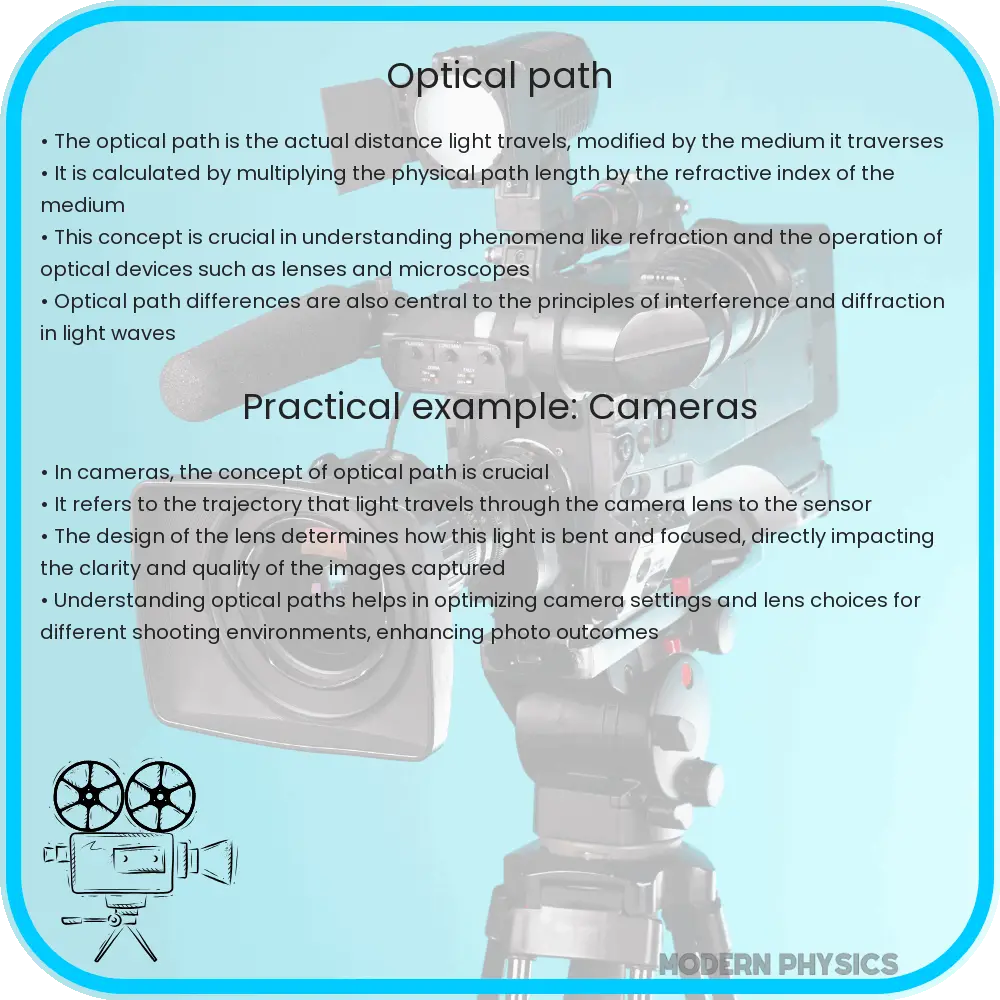Explore the fundamentals of optical path, light travel, and refraction, and their impact on precision in optical instruments and technology.

Understanding the Optical Path: Light Travel and Refraction
The concept of an optical path is fundamental in understanding how light travels and interacts with different media. This journey of light is not just a straight line, but a path influenced by the medium it traverses, governed by the principles of refraction and the precision of optical instruments.
The Nature of Light Travel
Light, a form of electromagnetic radiation, travels in straight lines through a homogeneous medium. In a vacuum, it moves at an incredible speed of approximately 299,792,458 meters per second. However, when light enters a different medium, such as water or glass, its speed changes. This change in speed, according to the medium’s optical density, is a key aspect of light behavior known as refraction.
Refraction and its Implications
Refraction occurs when light passes from one medium to another, causing it to bend. The extent of this bending is determined by Snell’s Law, which states:
\[ n_1 \sin(\theta_1) = n_2 \sin(\theta_2) \]
Here, \( n_1 \) and \( n_2 \) represent the refractive indices of the first and second medium respectively, while \( \theta_1 \) and \( \theta_2 \) are the angles of incidence and refraction. The refractive index, a dimensionless number, measures how much light is bent, or refracted, when entering a material.
Optical Path Length
The optical path length (OPL) is a crucial concept in understanding light propagation. It is defined as the product of the physical path length and the refractive index of the medium:
\[ \text{OPL} = n \times d \]
Where \( n \) is the refractive index and \( d \) is the physical path length. This concept helps in determining how light behaves in various optical systems like lenses and prisms, and is vital in designing precision optical instruments.
Precision in Optical Instruments
Optical instruments, such as microscopes, telescopes, and cameras, rely heavily on the precision of their design and the quality of materials used. Factors such as lens curvature, thickness, and the refractive index of the lens material play a critical role in determining the effectiveness of these instruments. High precision in these parameters ensures accurate focusing and image clarity, which are essential in fields ranging from astronomy to microscopy.
In summary, the journey of light through different media, governed by refraction and the concept of optical path length, is fundamental to understanding and designing optical instruments. The next part of this article will delve into practical applications and real-world implications of these principles.
Practical Applications of Optical Path Principles
The principles of optical path, refraction, and precision in light travel are not just theoretical concepts but have practical applications in various fields. In medical imaging, for instance, precise control over light paths in instruments like endoscopes and microscopes allows for detailed internal imaging. Similarly, in telecommunications, fiber optics rely on the principle of total internal reflection, a phenomenon closely related to refraction, to transmit light over long distances with minimal loss.
Advancements in Optical Technology
Technological advancements have further refined the use of optical paths. Adaptive optics in telescopes, for instance, compensate for atmospheric distortions, providing clearer images of celestial bodies. In photography, advanced lens coatings and design minimize aberrations, enhancing image quality. Moreover, in laser technology, controlling the optical path is crucial for precision cutting, engraving, and medical procedures like laser eye surgery.
Challenges and Future Directions
Despite advancements, challenges remain in managing optical paths in increasingly sophisticated applications. For instance, in quantum computing and communications, controlling the path and state of photons is a significant challenge. Future research is directed towards developing materials with unique refractive properties and improving computational models to predict light behavior more accurately in complex environments.
Conclusion
The journey of light, from its source to our eyes or to a camera sensor, is a complex interplay of physics and engineering. Understanding the optical path and the principles of refraction and precision in light travel is crucial for advancing technology in various fields. From the depths of space observed through a telescope to the microscopic world revealed under a microscope, the control and manipulation of light paths have enabled us to see and understand the world in ways previously unimaginable. As technology advances, our ability to harness and manipulate light will only grow, leading to new discoveries and innovations across science and technology.
In essence, the study of light travel, refraction, and optical precision is not just about understanding a physical phenomenon, but about unlocking the potential of light as a tool to explore, understand, and innovate in our world.
